Securing grants is essential for many academics and charities to fund their important work, but the grant writing process can be time-consuming, highly competitive, and loaded with technical requirements. In recent years, artificial intelligence (AI) has emerged as a powerful tool to help grant writers cut time and improve quality.
With grant application success rates often below 20%, any edge you can get matters. In this ultimate guide, you'll learn how AI is transforming grant writing in 2025, which tools are leading the way, and best practices for leveraging AI to save time and improve the quality of your applications.
1. The Current State of AI in Grant Writing
The use of AI in both academic and nonprofit sectors has grown exponentially in the past few years. Powerful language models, like GPT-4, and advanced techniques such as retrieval augmented generation (RAG), are making AI an indispensable assistant for grant writers. While general AI writing tools can be useful, a new breed of specialized grant writing platforms is emerging that are tailored to the unique needs of this domain. It's essential to understand that AI is not here to replace human grant writers, but to enhance their capabilities and efficiency.
2. How AI Can Transform Each Stage of the Grant Writing Process
One of the most exciting aspects of AI in grant writing is its ability to assist at every stage of the process. Let's explore each stage in detail:
Drafting Responses and Narratives
AI excels at generating first drafts that you can then refine and personalize. Specialized tools like Hinchilla, Grantable and others can analyze the grant requirements and use your previous grant applications to create tailored responses. This can be a huge time saving, imagine having a colleague who can analyse your past responses and other relevant documents to generate a first draft for you in minutes.
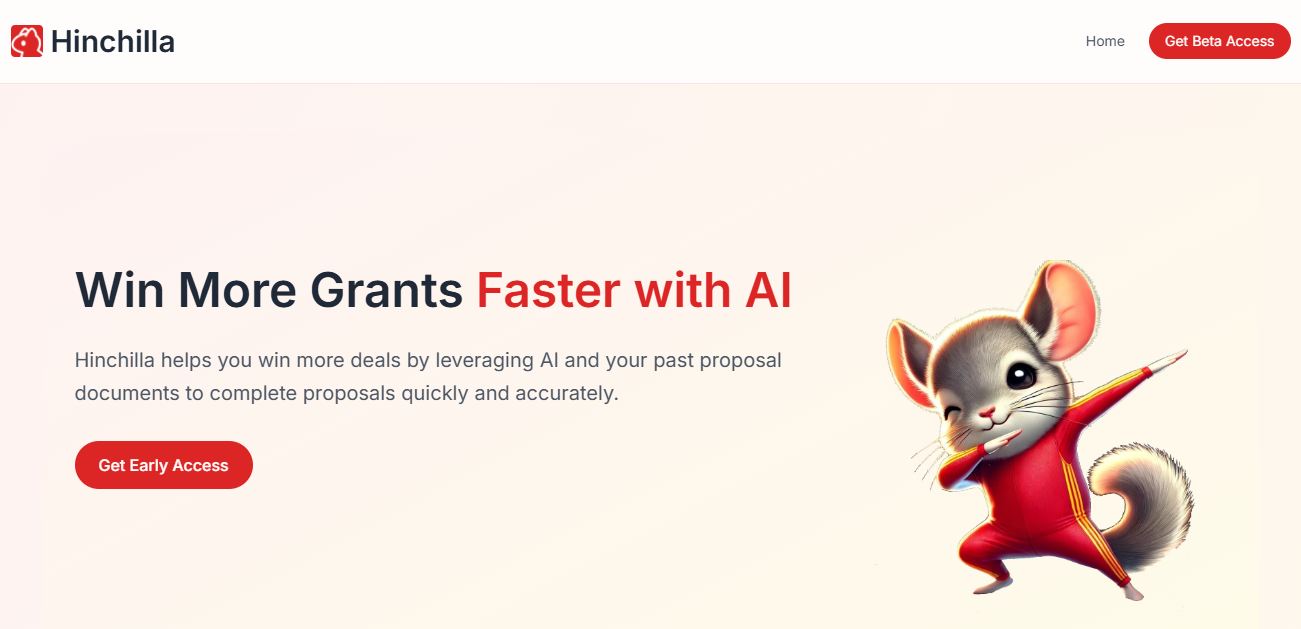
Using tools like these can save you time and help ensure that your responses align with the funder's requirements. If you have existing grant applications, risk registers, or other relevant documents these tools will use all that information to create new applications for you. You will even find it can improve the wording, taking complex or terse language and making it more accessible and clear.
Improving Writing Quality and Clarity
Grant reviewers often read dozens of applications in a sitting. Clear, compelling writing that gets to the point quickly is essential for standing out. While tools like Grammarly and ProWritingAid are useful, you can also leverage the power of large language models like ChatGPT to take your draft to the next level.
Here's an effective prompt template for using ChatGPT to refine an existing draft:
Please improve this grant application section:
<Draft>
[paste your draft]
</Draft>
Make these specific improvements:
- Simplify any technical jargon for a non-specialist reviewer
- Replace passive voice with active voice
- Strengthen the impact statements with more concrete language
- Ensure each paragraph has a clear topic sentence
- Add transition phrases between sections for better flow
- Highlight our unique approach and qualifications
- Ensure the tone conveys confidence without overstatementBy using a prompt like this, you can tap into ChatGPT's language understanding capabilities to get actionable suggestions for refining your writing. The AI can help simplify complex phrases, highlight areas that need more supporting details, and ensure a consistent, compelling voice throughout.
Ensuring Proper Alignment with Grant Requirements
Misalignment with a funder's priorities is one of the most common reasons for rejection. But sadly, let's be honest, completing grant applications can be fairly boring and it is easy to overlook some small but potentially key detail. AI can help ensure your application speaks directly to what reviewers are looking for.
Try this prompt to check alignment:
I need to ensure my grant application aligns with the funder's requirements.
<Grant Guidelines>
[paste relevant sections of guidelines]
</Grant Guidelines>
<Evaluation criteria>
[paste evaluation criteria if available]
</Evaluation criteria>
<My current draft>
[paste your draft]
</My current draft>
Please analyze:
1. How well my draft addresses each requirement in the guidelines
2. Whether I've missed any key elements from the evaluation criteria
3. If my language and framing align with the funder's stated priorities and values
4. Specific recommendations to improve alignment3. Popular AI Grant Writing Tools in 2025
The AI grant writing tool landscape has evolved rapidly, with both specialized platforms and general AI tools being adapted for this use case. Let's explore some of the leading specialized options in detail:
Hinchilla
Hinchilla takes your past grant applications and uses them to generate responses to new grant opportunities. This allows your own successful grant writing to inform and improve your response. It also allows Hinchilla to pull out complex data and information from any document you upload and have it rewritten in a format suitable for your latest grant application. Hinchilla will then proceed to create a draft response for each section of your grant application.
Pricing
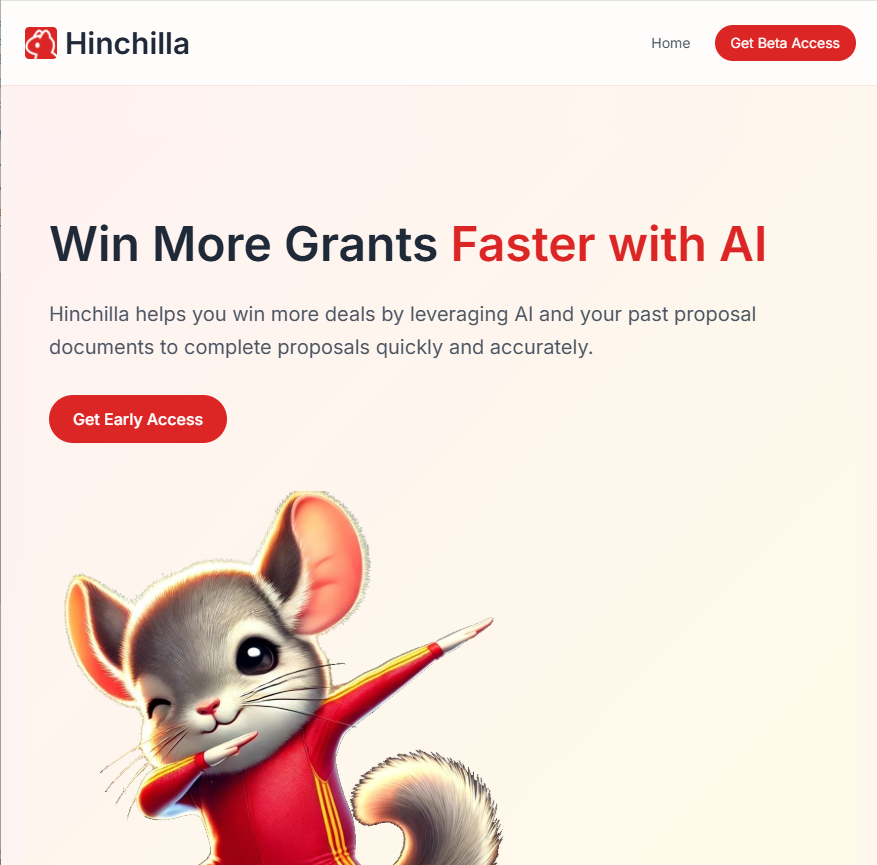
Grantable
Grantable works in much the same way to Hinchilla. You add a new grant opportunity and then upload your source documents. You can then select what they call "content paletes" for each section of your grant to guide the AI in how it generates your responses, and request drafts for each individual question.
Pricing
$89/month for 3 or more grants
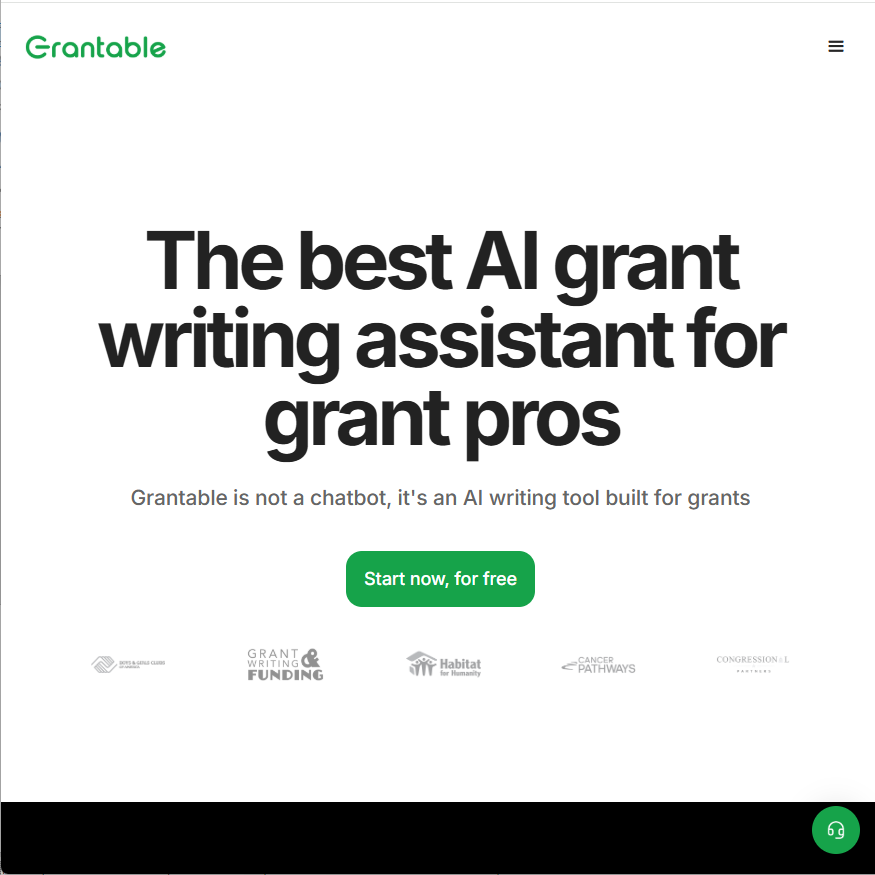
AutoGenAI
AutoGenAI is focused more on Bids, RFPs and proposals but can handle grant writing tasks as well. If you are a very large organisation and want features to support multi-user collaboration and a more involved grant application process this could be the tool for you.
Pricing
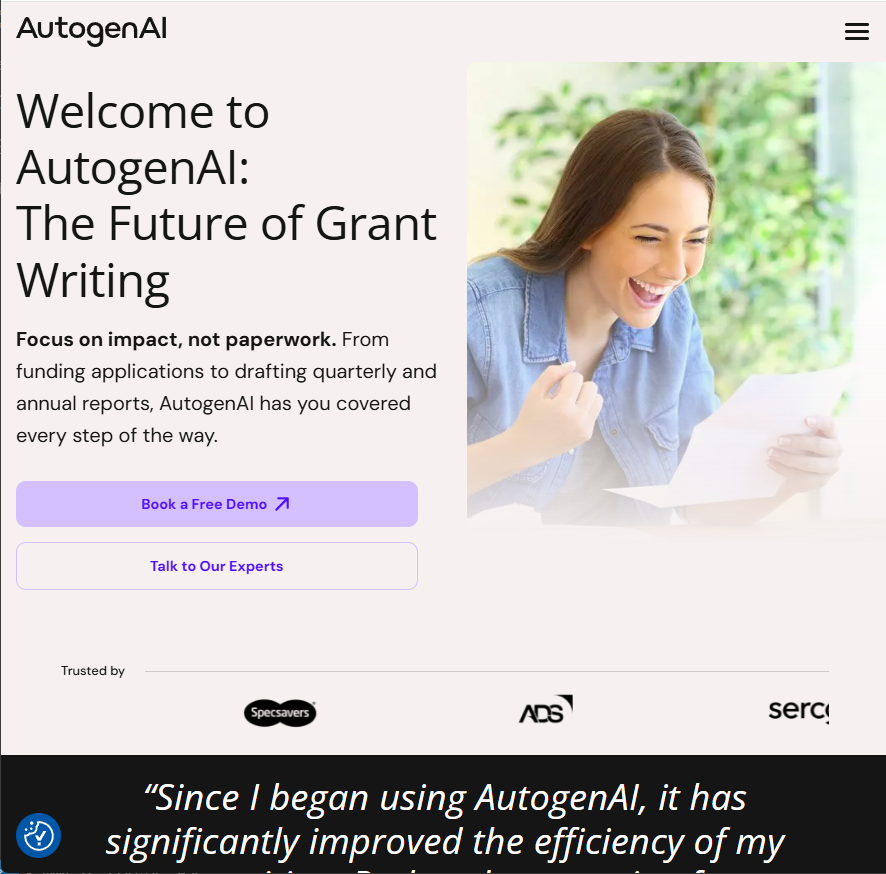
Plinth.io
Plinth is a UK based AI-powered platform for grant writers, fundraisers and organisations. Similar to Hinchilla and Grantable it can help drafting responses based on your past grant applications. Their platform covers a lot of other features for grant management (for organisations giving out grants), booking management and etc. Their grant writing tool is sold separately at time of writing.
Pricing
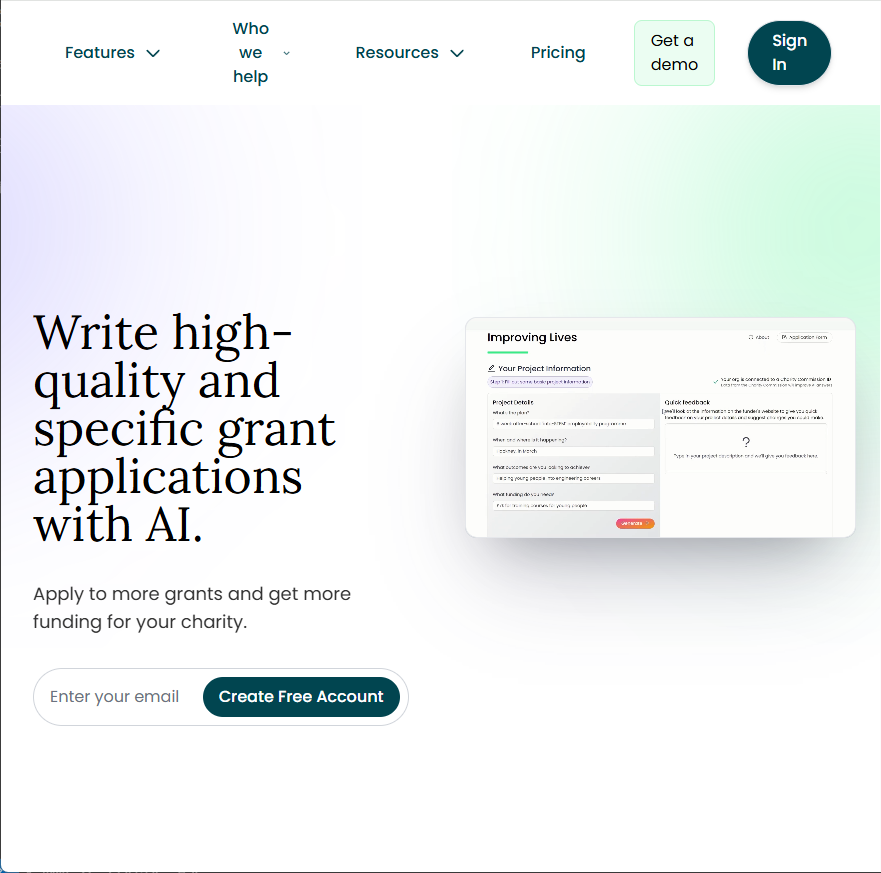
General purpose AI tools adapted for grant writing:
- ChatGPT: The pioneer in conversational AI can be a useful brainstorming and drafting tool.
- Claude: Anthropic's AI assistant is known for its more natural writing style. If you are unhappy with the output from ChatGPT you should give Claude a go and select the Claude Opus Model which has a more natural writing style.
- Custom GPTs: Chat GPT let's you create a Custom GPTs that can be tailored to your needs. People have already created Custom GPTs for Grant writing. Although they can't use data from your past grant applications they can ask you for information and use that to generate responses.
The choice between these options often comes down to the specific features you need and cost considerations, with specialized platforms generally commanding a premium but saving you more time.
4. Best Practices for Using AI in Grant Writing
Adopting AI in your grant writing process does require some thoughtful planning and consideration:
- Maintaining authenticity: It's crucial that the passion and purpose of your work shines through. Use AI to enhance and refine your writing, not replace your voice.
- Creating effective prompts: The quality of AI outputs depends heavily on the quality of your inputs. We've created the prompts in this article with this in mind. Use those as they are, or learn from them and create your own prompts.
- Review and refinement: Always review and refine the AI-generated content to ensure it fully aligns with your intent and the grant's specific requirements. AI is like any co-worker, it's not perfect!
- Addressing potential concerns: Some grant reviewers may be wary of AI-generated content. Be prepared to explain how you're using AI as a tool to enhance, not replace, thoughtful human composition. AI tools can help pull relevant information from your document library and improve your writing. So long as you aren't letting them make stuff up, you should be fine.
5. Real Results - How AI is Saving Time and Improving Quality
Early adopters of AI grant writing tools are reporting significant benefits:
- Time savings: Many users report cutting their writing time by 60-80% while actually increasing the number of applications they can submit. By reusing past responses and finding relevant sections in seconds you can cut a lot of painful manual work out of the process.
- Quality improvements: By leveraging successful language patterns and ensuring thorough question responses, AI-assisted applications are scoring higher on readability and responsiveness metrics. The humans with the best knowledge to answer a question in your application may not be the ones with the best writing skills. AI can bridge this gap by taking their knowledge and putting it into a well written application.
- Improved consistency: For organizations applying to multiple grants, AI helps maintain consistent branding and messaging across all applications, reinforcing legitimacy.
6. Ethical Considerations
As with any new technology, the use of AI in grant writing does raise some ethical questions that are important to consider:
- Transparency: There's an ongoing debate about if and how to disclose the use of AI in grant applications. As a best practice, we recommend being upfront about how you're using AI as an assistive tool.
- Authenticity: It's critical that AI is being used to scale and enhance authentic narratives, not fabricate or misrepresent your work and qualifications.
- Human role: AI should be viewed as a tool to reduce the burden of grunt work, freeing up humans to focus on higher-level strategy, creativity and relationship building. AI is not a magic wand.
- Responsible use: AI text generation can be misused. It's essential to review AI outputs for accuracy and to ensure it aligns with your organization's ethics and values.
7. Getting Started with AI for Grant Writing
If you're excited about the potential of AI to uplevel your grant writing process, here's how to get started:
- Evaluate your needs: Consider your grant volume, team size, and specific pain points in your current process. This will help guide your tool selection.
- Pilot multiple tools: Most AI grant writing platforms offer free trials. Take advantage of these to get hands-on experience and evaluate fit for your workflow.
- Share best practice: Using AI for Grant writing is still new, if you find something which works, share it with your team and colleagues. Let them know which tools you found which worked well, how to get the best out of them and any prompts you are using regularly.
8. Will AI replace Grant Writers?
As you can see from the above, there are a lot of ways AI can be leveraged to assist grant writers. However, we are still a long way from AI replacing grant writers. We see a future where grant writers are assisted by AI as they are by many other tools, letting them focus on the more interesting parts of their jobs and letting AI pick up the grunt work.
Conclusion
The use of AI in grant writing is no longer a far-off vision - it's a present reality that is delivering significant benefits to academics and charities alike. By embracing tools like Hinchilla and following best practices, you can save dozens of hours on each application while improving the quality and competitiveness of your submissions. While AI will never replace the critical thinking, passion and purpose that human grant writers bring, it's proving to be an indispensable ally in the pursuit of funding for important work. The future of grant writing is here, and it's powered by AI.
